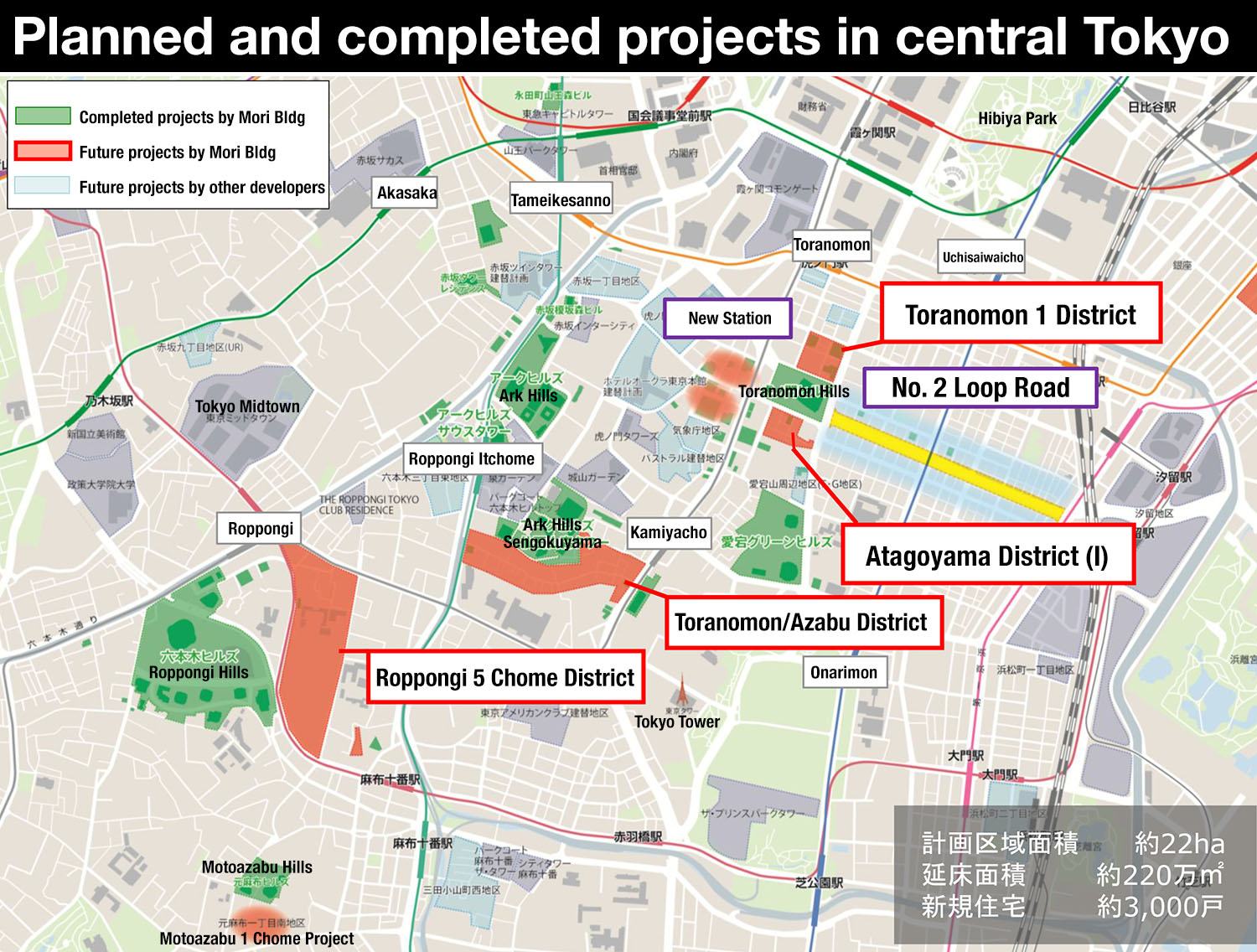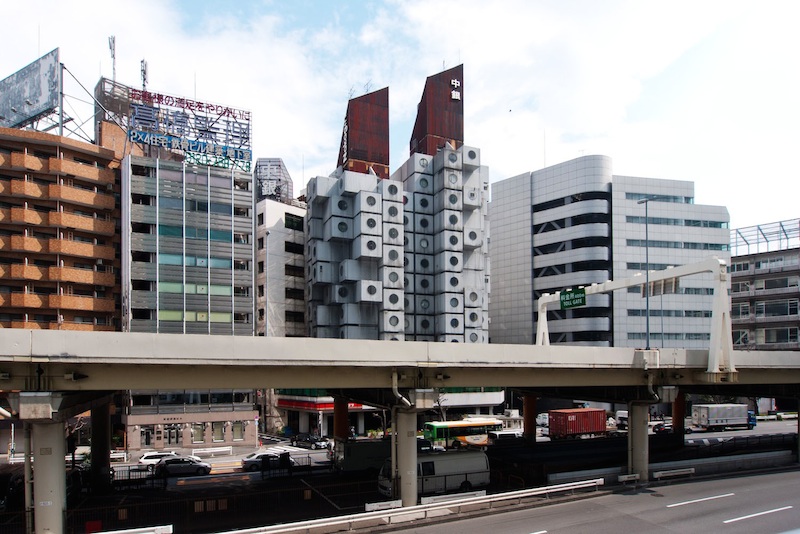Mori moving forward with two long-awaited projects in Roppongi

Mori Building is moving ahead with two major high-rise redevelopment projects in the Roppongi and Azabu/Toranomon districts - the Roppongi 5 Chome Redevelopment and the Toranomon-Azabudai Redevelopment.
Both projects are likely to become landmark buildings and may contain a mix of office, retail, entertainment and luxury apartments. Completion could be as early as 2022.Read more
Residential tower planned for site opposite Olympic Stadium

Gaien House, a 52 year old condominium located in a prime position across the street from the Olympic stadium site and Meiji Jingu Baseball Stadium, is about to be demolished and replaced with a 22-storey building containing apartments, commercial/retail space and childcare facilities. The project forms part of the Jingu-Gaien District Redevelopment, which also includes the demolition of the old Kasumigaoka Public Housing blocks, and the construction of new buildings for the Japanese Olympic Committee and Japan Sport Council.Read more
53-storey hotel and residential complex for Nishiazabu

Redevelopment discussions are moving forward for a prime site located directly across the street from Roppongi Hills. Although details are still under discussion, the project could be a mixed-use tower containing a 100-room hotel and 370 rental and condominium-type apartments.
According to a 2015 Investor Relations publication by Nomura Real Estate, the development may include a 53-storey tower with construction scheduled to start in 2018 and be completed by as early as 2022. It is possible that government allowances could result in a taller building than previously proposed.Read more
58-storey residential tower and hotel planned for downtown Yokohama

Mitsui Fudosan Residential, Marubeni and Mori Building have announced plans for a 58-storey hotel and condominium for downtown Yokohama. The 199.95m tall tower will contain approximately 1,200 apartments, with a hotel occupying several of the upper floors. Construction is scheduled to start in October 2016, with completion by January 2020. This will be the largest residential project over 100 meters tall in Yokohama since 2000.Read more
Nakagin Capsule Tower to undergo earthquake-resistant inspection

The results of an earthquake-resistant inspection could soon determine the fate of Ginza’s Nakagin Capsule Tower.
At an owner’s association meeting in early December 2015, the majority voted in favour of carrying out an earthquake-resistance inspection to determine the structural integrity of the building. If the building does not meet earthquake codes, the owners will consider demolishing the 44-year old metabolist landmark.Read more
High-rise planned for Omotesando former public housing site
 The Aoyama Kitamachi Apaato, a city-operated public housing complex located on a prime 40,000 sqm site in the centre of Omotesando, is going to be replaced with a 20-storey high-rise apartment building.
The Aoyama Kitamachi Apaato, a city-operated public housing complex located on a prime 40,000 sqm site in the centre of Omotesando, is going to be replaced with a 20-storey high-rise apartment building.
The current site includes 25 public housing blocks containing a total of 586 apartments. They were built between 1957 and 1968 and are now in various stages of ageing and deterioration. The 4 and 5 storey buildings do not have elevators, and some of the earlier buildings did not have bathrooms (in those days the residents would have gone to local bathhouses).
Since 2006, Tokyo City has been slowly vacating the tenants in preparation of redevelopment. Almost half of the apartments are vacant, while remaining residents gradually move out.
Demolition is scheduled to start in 2017, and completion is expected in time for the 2020 Summer Olympics.Read more
Kobe to redevelop No. 2 City Hall

Kobe City is considering demolishing and rebuilding the ageing No. 2 City Hall. Demolition could start as early as this year.
The No. 2 Building was completed in 1957. It originally had 8 floors, but the upper floors were removed after suffering catastrophic damage during the 1995 Great Hanshin Earthquake. The magnitude 7.3 earthquake caused the 6th floor of the building to collapse under the weight of the floors above. Rather than demolish the building, the 6th, 7th and 8th floors were removed, and the building went back into use from March 1996 onwards.Read more
